tt”Manga? Manhwa? Manhua? Those all sound pretty similar. What exactly are they? I swear I’ve heard of at least one of them.” If that sounds like you then you’ve found a good place to read up on them. Here’s a simple guide about the differences between the biggest forms of East-Asian comics (and a little bonus thrown in at the end)!
Manga: What Is It?
Manga is Japanese comics.
Manga is arguably the most world-renowned of the three East-Asian comic types we’re discussing here today. That doesn’t mean that it’s better necessarily. Strangely, a lot of Manhwa and Manhua are called Manga sometimes. Same for their animation being called anime. I’m not certain is this mislabeling, general ignorance, or if we should just stop caring about semantics.

Manhwa: Explained
Basically, Manhwa is Korean comics.
Interestingly enough, Manhwa is what kickstarted Webtoons. There are tons of apps that have Korean comics, officially even.

Manhua: In a Nutshell
In Short: Manhua is Chinese comics. Well, actually it can also include Taiwanese and Hong Kongese comics.
I do apologize for the generalization. Anywho, there are even different qualities among the different types of Manhua, making them much less uniform than either Manga or Manhwa.

Manga vs. Manhwa vs. Manhua: Who Would Win?
Art Styles: This is a very complicated part to discuss. Probably the most difficult of the three qualifying topics I chose. I will start by generalizing and go from there. Manga is typically more stylized, even if there are realistic aspects like anatomy or proportion, there will be something else like faces or hairstyles that is stylized. Manhwa and Manhua are normally seen as less stylized, relying more on realism.
I say all of this, however, and point toward how there is no real consistency. It’s this way with most art forms, but as the years have gone on comic artists from all over the world take inspiration from each other. Some modern Manga, Manhwa, and Manhua have some similarities in terms of look. Though despite this, even similar styles have a different framework. What I mean is that coloring and linework have distinct differences per region.
Of course, there is overlap, that’s my entire point. Even regarding this, you can follow the generalization I made to a degree. Just check the featured image at the very top of this article. If you pay close enough attention you can see similarities and differences. I don’t find it cut and dry in most cases, and I doubt you will if you jump into this hole with me.
Presentation Differences: Okay, now things will be a bit easier to dissect. Manga follows a relatively strict presentation. They are typically black and white, sans the odd special chapter or color release and they are read from right to left just like Japanese books. They do have split panels and character art splashes that aren’t bound by the panels. Manhwa is usually read left to right and also includes a vertical presentation on apps like webtoon (rather than paneled pages that you turn). Web Manhua follows the same format as Manhwa webtoons usually. Manhwa and Manhua are more often than not in full color, only occasionally in black and white like manga.
Once again a lot of this depends on several factors such as the format and location. Manhua from Taiwan and Hong Kong are actually read right to left like manga. If you check the uppermost, featured image of this article you can even see that there are two black-and-white images. One of them is actually a Manhua. Yep, even some of them are printed in black and white. The same even goes for some Manhwa, which is apparently some of the ones in physical print.
In terms of paneling, Manhwa and Manhua have more full-page imagery and blank space between panels. Though this could be more of a thing with the webtoon format. Manga has more intricate paneling from what I’ve seen, but it’s also not inherently designed for smartphone viewing. In fact, viewing manga page by page in a portrait format can actually make the reading experience worse if the author does page spreads or intense multi-page paneling.


Distribution: The distribution of Manga, Manhua, and Manhwa has some differences as well. This may be the least interesting part. Manga is usually distributed in magazines on different time scales. Usually weekly or monthly. Manhua and Manhwa seem to mostly be distributed via the web on webtoon sites and apps. It has a weird print history in its homelands, suffering from government intervention and censorship. Manhua used to have magazines and book releases like Manga but seems to focus on digital distribution mostly these days. Popular Manhwa and Manhua series do get printed books, though!
Which one is better? Well, well, well, that’s entirely up to you! I’d personally recommend you just read whatever catches your fancy. Who cares about what people read? Crazy people and fools, that’s who! Each one of these kinds of comics comes from a completely different ethnic group with their own artistic stylings and story trappings. You can’t really go wrong with any of them!
~Omake~
I thought it would be funny to compare American comics to Japanese comics (or “manga” to the layman).
Art styles: The main thing that sticks out to someone looking at these two comic types side-by-side would be how the characters are drawn. Comparing typical Japanese to American comic art you’ll see that American art is more realistically proportionate until you look at the ballooned-up muscles that some superheroes have. Japanese art has characters with big and expressive eyes and mouths a lot of the time, absolutely nothing like the American cartoon characters artists like Osamu Tezuka based his own characters on, right? Anyway, enough being facetious on my part, my actual point is that there are of course artistic trappings that both countries generally stick to. However, when you dig a little deeper you find that there’s a lot of diversity and overlap between the two.
Presentation differences: The main differences, presentation-wise, have to do with paneling and reading direction. Manga is read right-to-left and American comics are read left to right. Simple enough, it just matches their respective regions’ reading orientation. Paneling between the two comic types has spent years taking inspiration from each other, but I do see that manga more often has characters pop out of or being placed on top of panels. Not exclusive to manga, but I see that way more often. More American comics are also in color more often. One of the main American comics that I can think of that didn’t start in color is Teenage Mutant Ninja Turtles. That and some newspaper comics.
Distribution: A lot of manga is released chapter by chapter in various magazines and then later compiled into volumes. A lot of American comics are released by issue, but there is a style of comic that has a similar release format to manga; newspaper comics. They are put into more prominent publications daily or weekly, get special color pages, and get compiled into books! Surprisingly a lot of similarities! Plenty of dissimilarities as well! Newspaper comics have series that should have been canceled decades ago or are only entertaining if you’re geriatric. Though, the argument that could be lobbed against manga involves some good ‘ol internet name-calling and bad-faith criticisms as well. Criticisms such as ‘mid’ are my personal favorite.
Huh, this Omake got a little bit out of hand. Despite that, I really adore comics no matter where they’re from. There are so many different genres, ideas, and styles. The great thing is that it applies on a macro and micro level. There’s a lot of diversity and choice within the spectrum of manga alone, and that only increases when taking a look at works from other places.
Manga, Manhwa, Manhua Related Links
I’ll be working tirelessly to provide more and more content for Manga March here on Final Weapon. Here are some other choice manga articles and reviews, conveniently linked here for your viewing pleasure!


